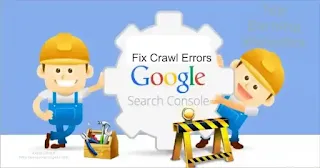Fix ten mistakes and increase site crawling speed
Having trouble getting your site indexed?
If so, in this article, I am sharing some tips and tricks that you can follow to get your site indexed well. And very soon, the indexing process will be completed. Apart from this, your crawl rate will also increase.
The problem with Blogger has always been that the search console has many indexing issues. First, note that you should not limit your site to the Google search engine. You should index your site on Bing Webmaster and Yandex Webmaster in addition to Google. But still, your site should be indexed in the Google search engine, and your site should appear in Google searches. There are some bugs that make Google bots unable to crawl your site properly. Following are some mistakes that affect your site's crawl rate.
- Plagiarized content: Plagiarized content cannot be indexed by Google because the Google bot knows that the content has been published on another site before this one. So Google search engines will always filter the content of the site that was published earlier. If plagiarized content is not edited, your crawl rate decreases. So always try to write your own content, and avoid theft.
- Images: The biggest hindrance to your site's performance is images. Often, new bloggers upload good-quality images on their site that are huge in size. You should know that Google does not filter high-resolution images that are too large in size in the search engine. The search engine takes a few seconds to perform the search, after which the searched keywords are filtered from various sites and displayed on the user's screen. Remember here that if your images are heavy, Google will skip them. The easiest solution is to immediately remove all images from your blog and convert them to WebP format. Converting images to WebP format reduces the size of your images and makes them easier for Google search engines to find. It has a very positive effect on your site.
- Custom Robot.txt: Mistakes in custom robot settings also weaken your site's crawl rate. Always set custom robot text and make it crawl-friendly, so your site crawls faster.
- Not labeling: The biggest problem with indexing URLs is when your article is not labeled. So always choose a good category for your articles and label them so that the Google bot knows which category the article belongs to.
- Using multiple <h1> tags: "<h1>" tags are the main heading of your article. Often, new bloggers use more than one H1 tag in their articles. If you use more than one H1 tag, your URL will be indexed but not filtered by search engines. If you index your URL in the Bing search engine, you will be provided with a complete report on how many "<h1>" tags are used in your article. and has also demanded immediate reform.
- Deleting your indexed URL: The crawl rate also decreases as your indexed URL is deleted. This causes Search Console to give your site a redirect error, and your site URL is also labeled as a 404 error. A simple solution is to block the article you want to delete from the search console. You can block your URLs by using removal, or don't delete the post you want to delete but delete the entire article on the page and replace it with an apology notice.
- Canonical tags: Canonical tags mean that you index your URLs in both "?m=1" and "?m=0" ways. This problem only happens with bloggers. "?m=1" indexes your URL faster, and "?m=0" takes some time. But when one URL is indexed, the other causes an error in the head console called the canonical tag. This tag also affects your indexing speed and crawl rate. To avoid this, you should always index only one URL. If "?m=1" has an immediate index, use "?m=1" and don't use "?m=0".
- Showing too many ads on the main page: Too many ads on your main page also affect your performance. And when performance suffers, your crawl rate drops. When the crawl rate is low, your site may not be well found by search engines. So try to have minimal ads on the main page.
- Use bold and weighty fonts: Some fonts make your posts look good but they are heavy fonts. Always use LightFont for your articles. Like the Century Gothic font which is a fairly light font.
- Good Template: If your blogger template is not good, standard, or mobile-friendly, then your crawl rate will decrease, and it will be difficult for searchers to find your site through keywords.
Follow these tricks to boost your blogger speed.
For all the above-mentioned errors, you have to correct them first. Now let me teach you the trick to increase the crawl rate.
This trick can be very useful whenever you need to index a URL. If you are an AdSense-approved blogger, then this trick will be very useful for you.
Whatever topic you want to write about, write it first and prepare your essay thoroughly. But don't index it in the search console. When your article is ready, publish it. Just give your article a single <h1> tag. Choose a label for the article and write a very short title.
Now you have to turn off ads running on your site before indexing. This means that when you index a URL, the Google bot visits your site and evaluates your site speed and article quality. Your site speeds up when your ads are off. Google Bot notices your site's performance, and your article gets indexed very quickly, and your crawl rate also increases. If the crawl rate has not increased, manually increase the crawl rate of your site before turning on ads.
If you liked the article, please share your opinion in the comment section.

